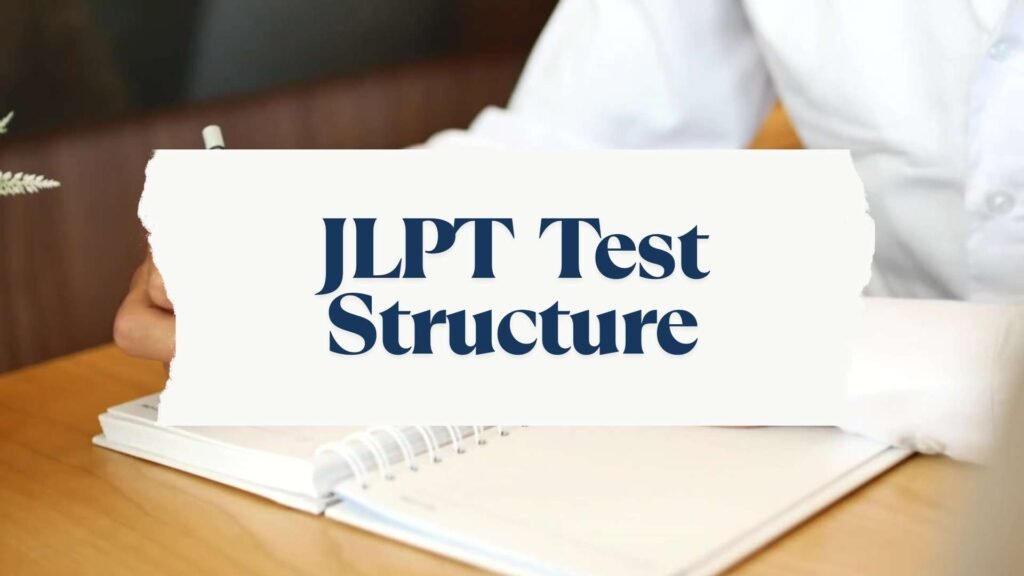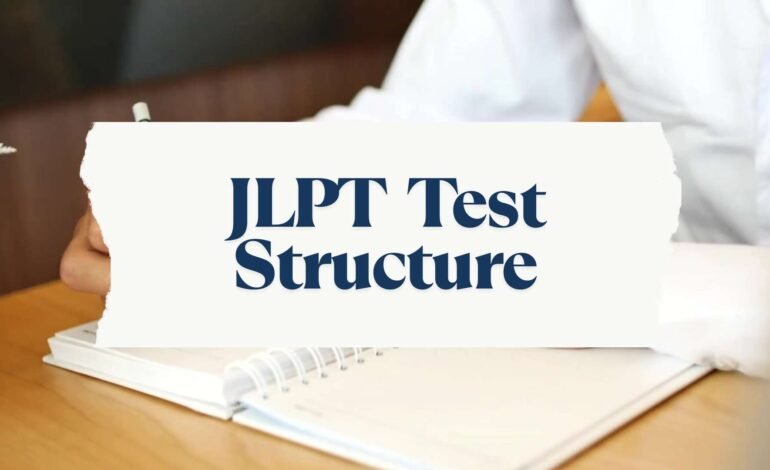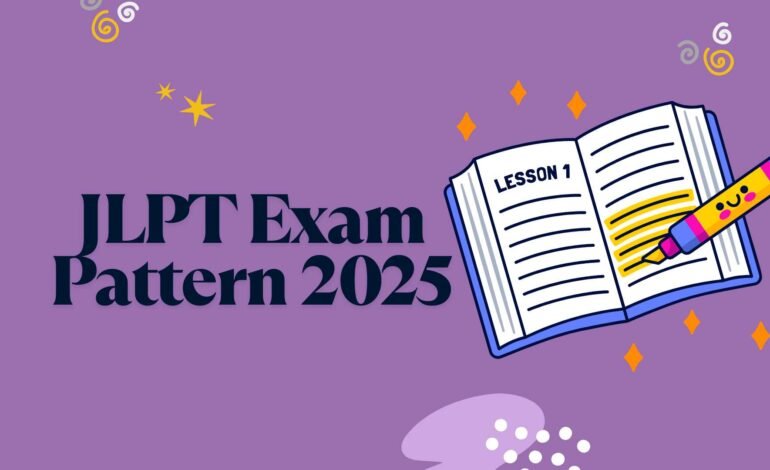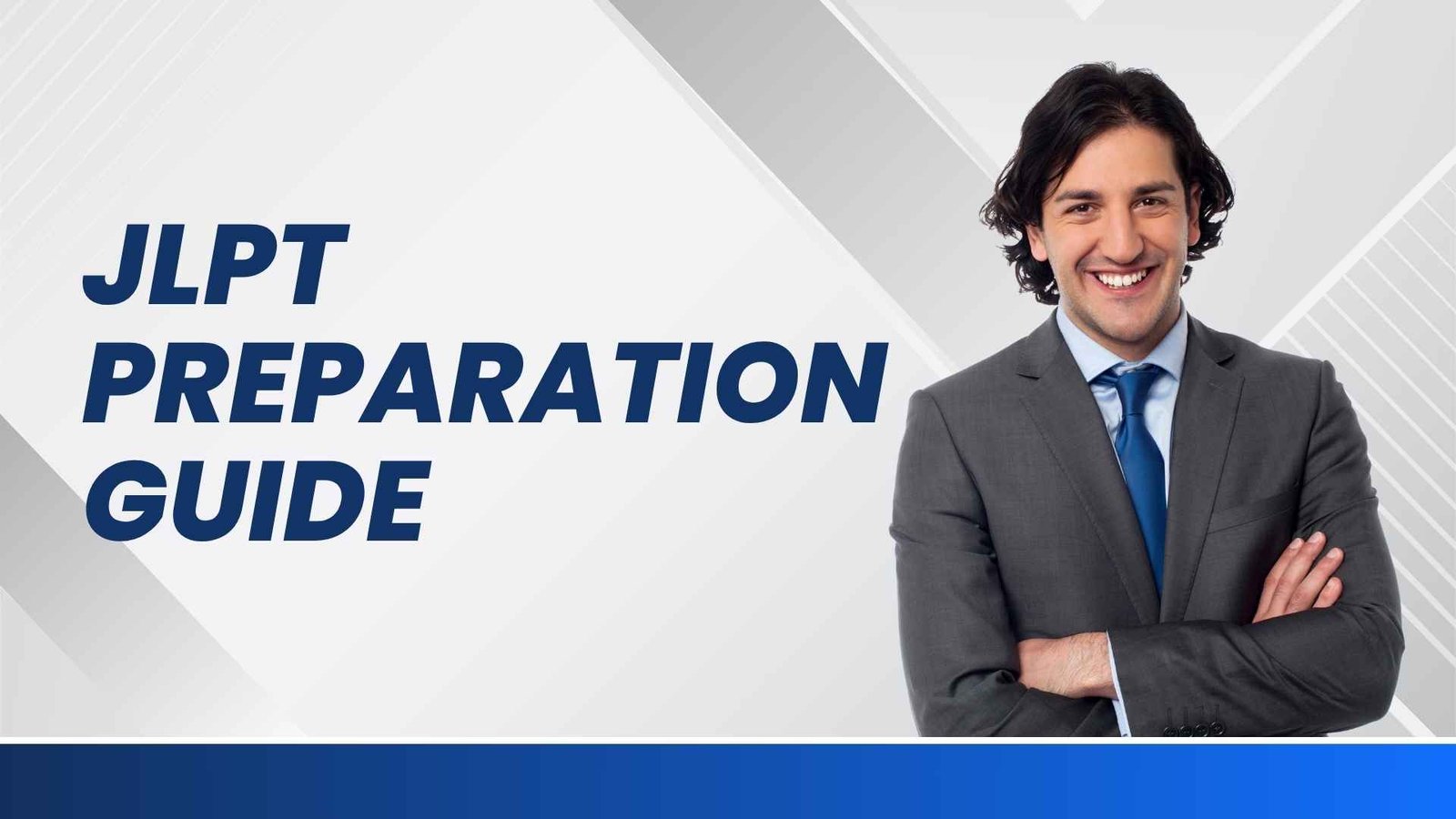The Japanese Language Proficiency Test (JLPT) is one of the most recognized language certification exams for learners of Japanese across the world. If you’re planning to take this exam, it’s crucial to understand the JLPT test structure—how the test is designed, what sections it includes, and what skills are assessed at each level.
Whether you’re a beginner aiming for N5 or an advanced learner targeting N1, having a clear understanding of the JLPT format can dramatically improve your preparation and performance.
For detailed breakdowns of each JLPT section—grammar, reading, listening—refer to the official JLPT Test Sections Guide.
What is the JLPT?
The JLPT (Japanese Language Proficiency Test) is an internationally recognized exam conducted by the Japan Foundation and JEES to measure the Japanese language proficiency of non-native speakers. The test is divided into five levels, from N5 (beginner) to N1 (advanced), allowing learners to demonstrate their language skills at various stages.
Each level of the JLPT evaluates three core skill areas:
- Grammar & Vocabulary (Language Knowledge)
- Reading Comprehension
- Listening Comprehension
A clear understanding of how these components are structured within the JLPT test structure is essential for developing an effective and targeted study plan.
For a full breakdown of the test format, structure, and question types, explore our detailed JLPT Exam Pattern 2025 guide.
JLPT Test Structure: A Section-wise Breakdown
Let’s break down the JLPT test structure based on the three major skill areas tested in all levels from N5 to N1.
1. Grammar & Vocabulary (Language Knowledge)
This section evaluates your understanding of sentence structure, word usage, and appropriate grammar forms.
- Vocabulary: You’ll be tested on kanji reading, word meanings, word usage in sentences, and selecting the correct kanji for a word.
- Grammar: Expect questions like filling in the blanks, rearranging sentence fragments, and selecting the most natural grammatical construction.
Focus Tip: Practice with JLPT-specific grammar books and vocabulary flashcards. Recognize sentence patterns used in native materials such as manga and simple blogs.
Curious about how the JLPT is structured? Check out our comprehensive JLPT Format Explained guide.

2. Reading Comprehension
The reading section of the JLPT test structure measures your ability to understand and interpret written Japanese across various formats.
- Content Types: Ads, notices, emails, short passages (N5/N4) to opinion pieces, formal documents, and essays (N2/N1).
- Question Styles: Main idea, specific detail, inference, and identifying sentence function.
Focus Tip: Read graded readers, short stories, and news websites like NHK News Easy. The more exposure you get, the faster you’ll be able to scan and understand under time pressure.
3. Listening Comprehension
Listening is often considered the trickiest part of the JLPT test structure. It tests how well you understand spoken Japanese in real-world situations.
- Dialogues & Monologues: Ranging from simple conversations (N5) to announcements, interviews, and instructions (N1).
- Question Types: What was said? What should be done? What’s the speaker’s intent?
Focus Tip: Listen to Japanese podcasts, YouTube channels, and JLPT practice audio. Shadowing (repeating what you hear aloud) is a powerful technique for improving listening retention.
Get a clear roadmap of the test format—check out our JLPT Exam Structure guide to understand each section and question type.
JLPT Test Structure by Level
The JLPT test structure becomes progressively more challenging as you move from N5 to N1. Each level varies in time duration, section complexity, and skill depth. Here’s a quick overview:
| Level | Sections Included | Time Allotted | Difficulty Level |
| N5 | Language Knowledge, Listening | ~90 minutes | Basic |
| N4 | Language Knowledge, Listening | ~105 minutes | Elementary |
| N3 | Language Knowledge, Reading, Listening | ~140 minutes | Intermediate |
| N2 | Language Knowledge, Reading, Listening | ~155 minutes | Advanced |
| N1 | Language Knowledge, Reading, Listening | ~170 minutes | Near-Native |
As you progress to higher levels:
- The test duration increases
- The volume and complexity of reading and listening materials grow
- The JLPT test structure for N3 and above introduces separate timing blocks for Reading and Listening sections
Tip: Understanding how time is distributed across sections can help you manage your pace during the exam and tailor your mock test sessions accordingly.
Get clear insights into test layout and section breakdown—visit our JLPT Exam Format guide.
Smart Preparation Based on JLPT Test Structure
To successfully crack the JLPT, it’s not just about studying hard — it’s about studying smart. Aligning your preparation methods with the actual JLPT test structure ensures you’re ready for every section on exam day. Here’s how to do it effectively:
Grammar & Vocabulary (Language Knowledge)
This section tests your understanding of sentence structure, grammar forms, and vocabulary in context. Your prep should focus on both memorization and practical usage.
- Study JLPT-specific grammar points based on your level (N5–N1)
- Use SRS (Spaced Repetition Systems) like Anki or WaniKani to retain vocabulary and kanji efficiently
- Practice daily grammar quizzes from apps or books like TRY! or Shin Kanzen Master
Pro Tip: Group similar grammar points and study them side by side to recognize subtle differences.
Curious about the exam layout and question types? Check out the detailed JLPT Test Format guide for full clarity.
Reading Comprehension
Reading tasks assess your ability to interpret different types of texts—from simple notices to formal essays.
- Read short stories, blogs, manga, or JLPT reading practice books
- Highlight transition words, connectors, and main idea sentences
- Take timed reading drills to improve speed and comprehension under exam conditions
Pro Tip: Summarize what you read in your own words to strengthen understanding.
Listening Comprehension
Listening challenges test how well you understand conversations, announcements, and instructions in real-life contexts.
- Listen to native audio daily — even 5 to 10 minutes makes a difference
- Use transcripts while listening to bridge the gap between sound and meaning
- Watch Japanese dramas, anime, or news with Japanese subtitles for immersive learning
Pro Tip: Try shadowing, where you repeat what you hear immediately — it improves pronunciation, speed, and memory retention.
Everything you need for next year’s exam is in our comprehensive JLPT 2025 Guide—timelines, tips, and strategies.
By tailoring your prep to match the JLPT test structure, you’ll build the exact skills needed to perform confidently in each section. Balance consistency with variety, and always review your mistakes to maximize learning.
FAQs on JLPT Test Structure
Q1: How many sections are there in the JLPT test?
A: There are three main sections: Language Knowledge (Grammar & Vocabulary), Reading, and Listening. Levels N5 and N4 combine Language Knowledge and Reading into one.
Q2: Is the JLPT test structure the same for all levels?
A: The structure is similar, but content length, complexity, and question types vary significantly between N5 and N1.
Q3: Does the JLPT include speaking or writing sections?
A: No. The JLPT test structure does not include speaking or writing. It only evaluates reading and listening comprehension, along with grammar and vocabulary.
Q4: What’s the most difficult part of the JLPT structure?
A: Many students find the listening section challenging due to the speed and nuance of native-level Japanese.
Q5: How can I get used to the JLPT test format?
A: Regular mock tests, time-bound practice, and exposure to real Japanese media aligned with your level are the best ways to adapt to the JLPT test structure.
Aspiring to improve your comprehension skills? Discover expert techniques in our JLPT Reading & Listening Sections guide.
Mastering the JLPT Starts with the Right Strategy
Understanding the JLPT (Japanese Language Proficiency Test) structure is your first step toward effective preparation. Whether you’re aiming for N5 as a beginner or targeting the advanced N1 level, aligning your study plan with each test component—Grammar, Vocabulary, Reading, and Listening—is crucial for success.
At TLS – The Japanese Language School, we guide students through a structured and personalized learning path tailored to each JLPT level. With expert faculty, real exam simulations, and consistent practice, we ensure that you’re not just studying Japanese—you’re mastering it with confidence.
Stay consistent.
Practice with authentic JLPT materials.
Train in real test environments.
Get mentored by certified Japanese language experts at TLS.
Start your JLPT journey the smart way—with TLS by your side, your goals are well within reach.
Visit:
2/81-82, 2nd Floor, Lalita Park, Gali No – 2, Laxmi Nagar, New Delhi – 110092
Call Us: +91 8700956038
Email: tls@teamlanguages.com






